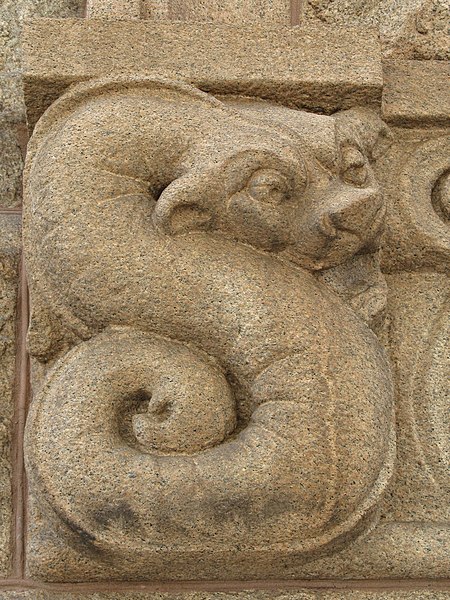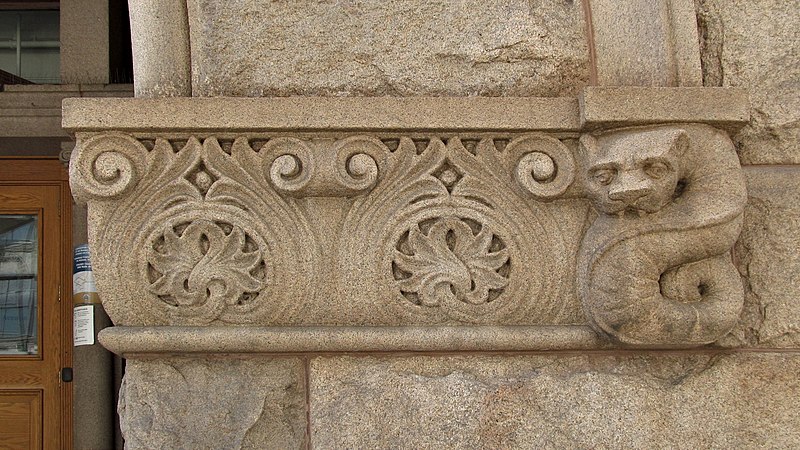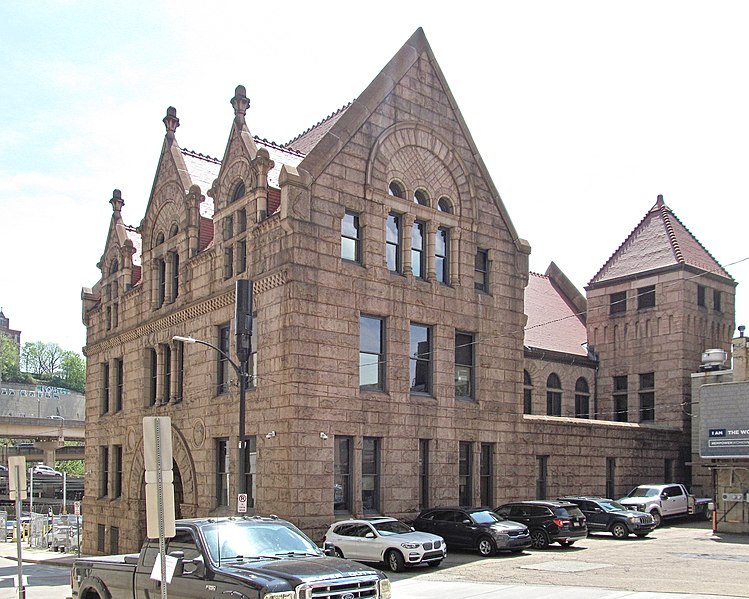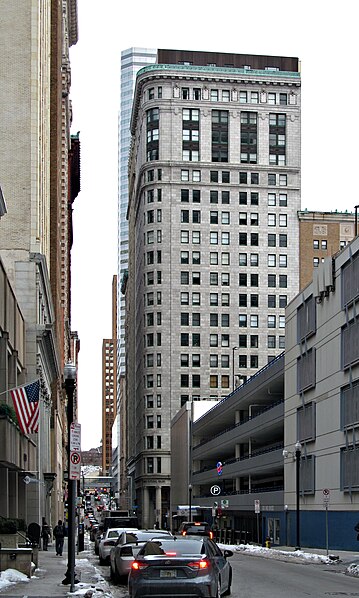Here is how the Land Trust Company building (later the Commercial National Bank) looked in 1905:

And here is how it looks today:

Much better, isn’t it?
Here is how the Land Trust Company building (later the Commercial National Bank) looked in 1905:

And here is how it looks today:

Much better, isn’t it?

By a splendid exercise of bureaucratic irony, the old morgue now houses offices of the county health department. It was designed by Frederick Osterling and built—on Forbes Avenue—in 1901. In 1929, it was moved to its current location on Fourth Avenue.

Frederick Osterling’s Romanesque buildings nearly always give us a monster or two to admire.




Built in 1927, this Fourth Avenue tower was designed by John M. Donn, a Washington architect known for government buildings who seems not to have done anything else around here. (Update: This is incorrect; Donn also designed the Cathedral Mansions apartments in Shadyside.) The curious ornamental obelisks at the corners of the cap were the inspiration for Philip Johnson’s Tomb of the Unknown Bowler down the street.



Now converted to luxury apartments as “The Carlyle,” this classical Fourth Avenue bank tower was designed by the firm of MacClure and Spahr. Benno Janssen, who was working at the firm, is said to have had a large part in the design. It opened in 1906. Curiously, the building behind it, the Commonwealth Bank Building, was built at the same time and reached exactly the same height, 300 feet.

John Massey Rhind was Andrew Carnegie’s favorite sculptor; he gave us the Noble Quartet in front of the Carnegie Institute and the statue of Robert Burns outside Phipps Conservatory. Here he gives us some allegorical figures to adorn the entrances to the People’s Savings Bank’s splendid tower at Fourth Avenue and Wood Street. Not altogether coincidentally, the building itself was designed by Alden & Harlow, Carnegie’s favorite architects, whose firm (with their earlier partner Longfellow) was also responsible for the Carnegie Institute. Above, the Wood Street side; below, the Fourth Avenue side.
